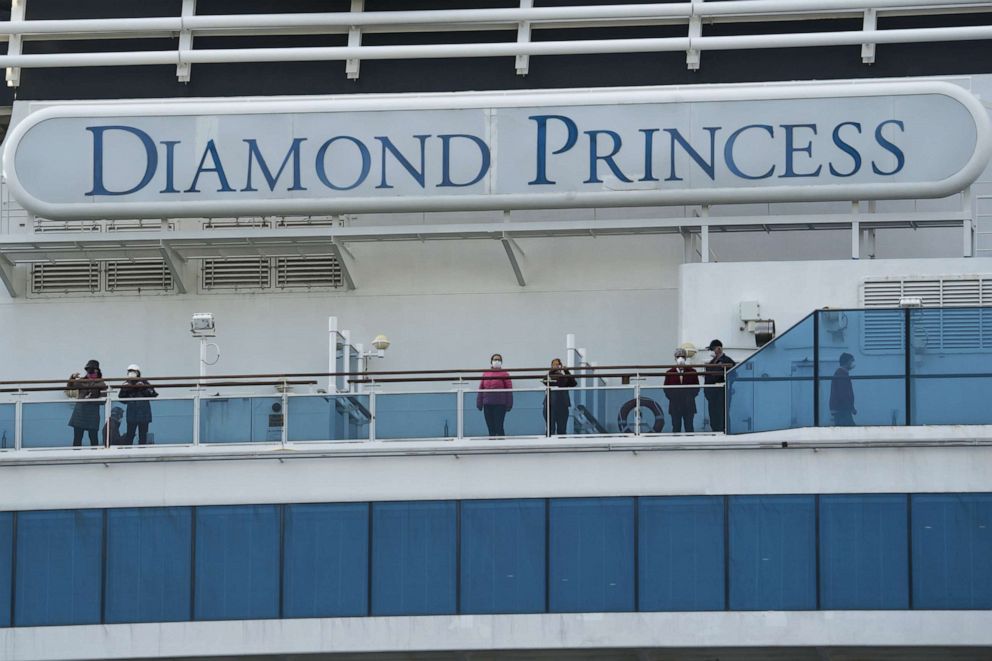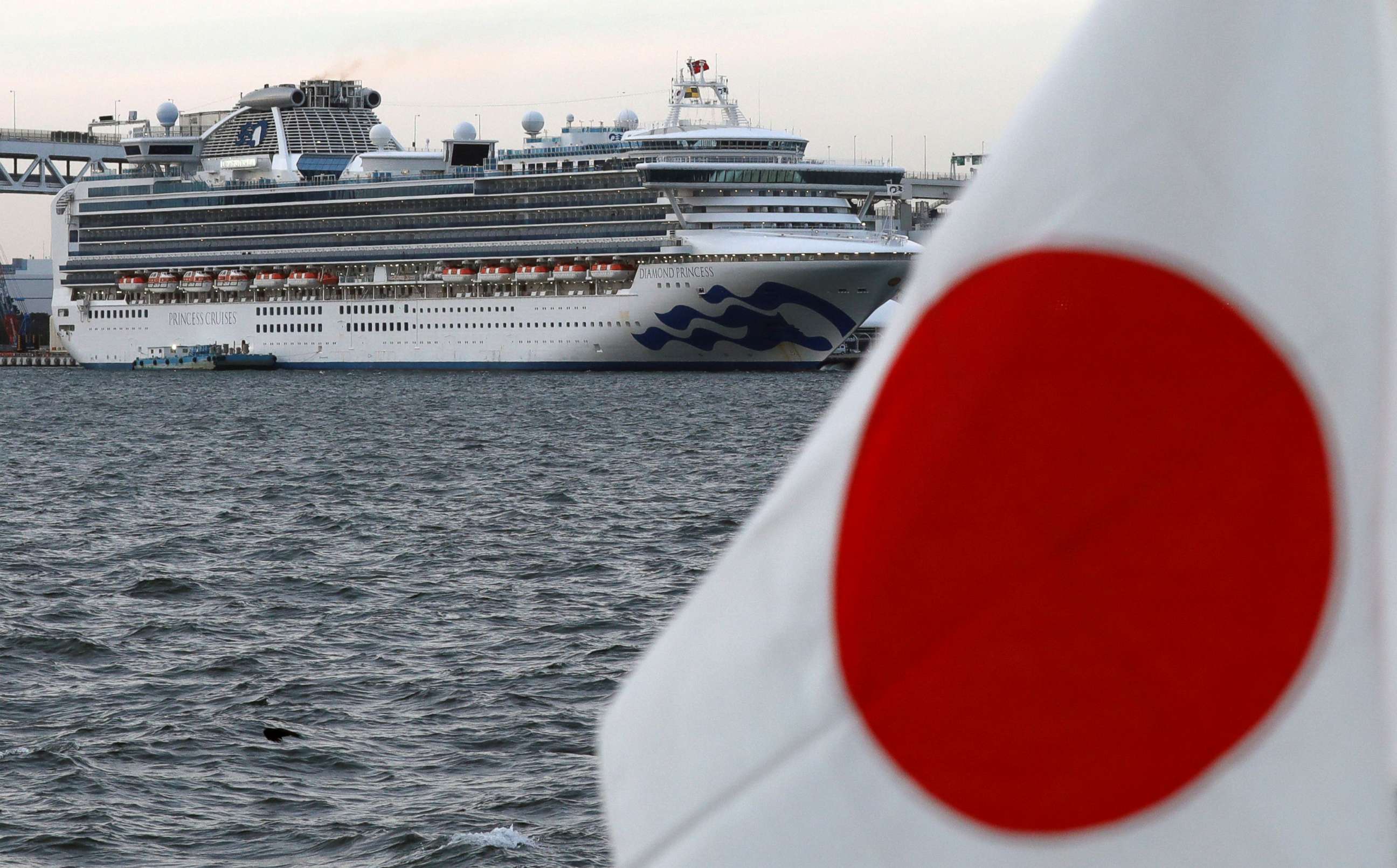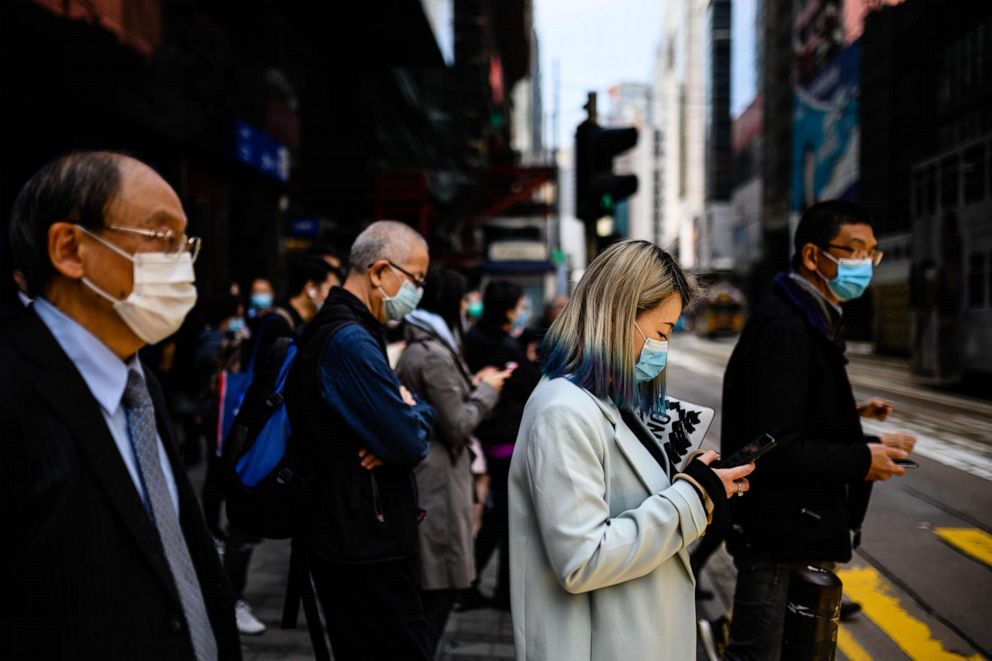14th American diagnosed with new coronavirus after CDC warned spread was 'likely'
Fourteen people in the United States have tested positive for the disease.
A 14th American has tested positive for the novel coronavirus, hours after the Centers for Disease Control warned the spread of the disease in the U.S. was "likely."
The person who tested positive was one of those evacuated from Wuhan, China, where the disease first emerged, on a flight that landed in California on Feb. 7, according to the CDC. It is the second person at the San Diego military base to test positive for the disease, but officials said the two arrived on different flights and there was no evidence of person-to-person transmission in the quarantine.
More than 600 people remain in quarantine in the U.S. after being flown out of China last week, officials said.
Top health officials prepped Americans for the prospect of novel coronavirus spreading in communities in the United States during a news conference earlier Wednesday.
"At some point, we we are likely to see community spread in the U.S.," said Dr. Nancy Messonnier, director of the National Center for Immunization and Respiratory Diseases.
"[We] can and should be prepared for this new virus to take a foothold in the U.S.," Messonnier said.
So far, there are only 14 cases confirmed in the United States, according to the CDC. The patients are in Arizona, California, Illinois, Massachusetts, Washington and Wisconsin and all but two cases are linked to travel to Wuhan, China.

The 13th case was reported in a patient who returned from Wuhan on one of the State Department's evacuation flights. Given the spread of the virus in Wuhan, it's not surprising to see a case of coronavirus among the repatriated Americans, Messonnier explained.
The patient is currently hospitalized with mild symptoms. A mix-up at the CDC caused an initial false negative diagnosis, which Messonnier called "unfortunate," noting that the agency has since put additional quality control measures in place to prevent future mistakes.
Some of the new coronavirus diagnostic kits that were mailed out to states last week delivered inconsistent results when states tested them to ensure they worked correctly. While some states should be able to start doing their own testing this week, others are delayed while the CDC figures out what went wrong. Even when all states are up and running, the CDC will continue testing patient samples at the agency's headquarters in Atlanta.
"Speed is important, but equally or more important, is making sure the lab results are correct," Messonnier said.

The agency is still investigating whether 14 days is the most accurate incubation period for the virus, a process that's complicated by patients who may have mild symptoms, or who are asymptotic while infected with the disease.
"We still think that for today, for now, 14 days is the right interval to use," Messonnier said.
Meanwhile, the CDC has screened more than 30,000 passengers at 11 U.S. airports. None of those screenings have resulted in a novel coronavirus diagnosis so far.
Countries respond to the threat of COVID-19
Shanghai is postponing its Formula One Chinese Grand Prix racing event, previously scheduled for April 19, as novel coronavirus continues to claim lives in China.
The decision was made in order to "ensure the health and safety of the traveling staff, championship participants and fans," FIA, the international racing association, said in a statement.
The Shanghai racecourse is located roughly 500 miles east of Wuhan, China, the epicenter of the outbreak.
At the same time, Cambodia has accepted the Holland America cruise ship that had been wandering the seas in search of a port, and will allow passengers to disembark there, the company said in a statement. The ship, which was supposed to disembark in Yokohama, Japan, was rejected by multiple countries, despite having no known or suspected cases of the new coronavirus among its passengers and staff.
WHO Director Genera Tedros Adhanom Ghebreyesus rebuked countries that have denied the ship entry to their ports, "often without an evidence-based risk assessment," and praised Cambodia for giving the ship permission to dock.
"Outbreaks can bring out the best and worst in people," he said during a Wednesday news briefing.
The Diamond Princess quarantine continues
In Japan, where travelers aboard the Diamond Princess cruise ship have been quarantined for over a week, the mood among passengers shifted Wednesday as dozens more people tested positive for the novel coronavirus.
"[We] really just need to get off this boat," New York resident Guy Cerullo told ABC News in a text message.

What was supposed to be a honeymoon cruise around Asia has turned into a nightmare for Cerullo and his wife, Milena Basso, who are among the thousands of people on board the Diamond Princess, which has been quarantined at sea since docking in the Japanese port of Yokohama on Feb. 3. At least 174 people aboard the vessel had tested positive for the new coronavirus by Wednesday -- with 39 new cases in the past 24 hours. One quarantine officer has also been infected, according to Japan's Ministry of Health, Labor and Welfare.
All those infected with the disease have been brought ashore for treatment, while the other passengers remain confined to their rooms on board until the quarantine period ends, the ministry said.
The newlyweds, who were in better spirits when speaking to ABC News earlier in the week, said the spiking number is worrying and cabin fever is beginning to take over.
"To think that they are still going to use this boat is mind-blowing," Cerullo said. "No one will ever want to go on it."
Some experts questioned whether the cruise ship quarantine was doing more harm than good.
"The issue with quarantine remains the lack of ability in a closed environment like this to maintain infection prevention measures on a ship," said Dr. Eric Cioe-Pena, director of global health at Northwell Health in New Hyde Park, New York. "We are seeing numbers increase dramatically, which likely means that there is ongoing spread of the virus on these ships. That’s concerning, as it's creating a second epicenter of the infection in a Japanese port."

A spokesperson for Princess Cruises, which operates the ship, confirmed the new cases of coronavirus.
"We are following guidance from the Japan Ministry of Health on plans for disembarkation protocols to provide medical care for these new cases," the spokesperson said in a statement Wednesday.
Approximately half of all people who were on board the Diamond Princess are from Japan, while more than 400 passengers are from the United States, according to the cruise line spokesperson.
On Tuesday, the cruise line spokesperson confirmed to ABC News that 23 Americans were among those infected. It's unclear whether the new cases include any U.S. citizens.
The wife in another couple on board the ship, whom ABC News interviewed earlier in the week, said her health has declined. Utah resident Karey Maniscalco said she is suffering from kidney stones but hasn't sought medical attention because "they will remove me alone from the ship and leave my husband here."
"I hear rumors if you get off they restart your quarantine, which isn't something I can risk," Maniscalco told ABC News in a text message Wednesday. "It's been very challenging."
Another Utah resident, Melanie Haering, who is on the cruise with her husband John to celebrate their retirement, said her spouse has had a high fever and it took hours before they were seen by a doctor. He has not yet been tested for coronavirus, Haering told ABC News in a text message.
The worldwide response to COVID-19
Since the first cases of the newly discovered virus were detected back in December in the Chinese city of Wuhan, the epicenter of the outbreak, China's National Health Commission said Wednesday that it has recorded a total of 59,841 confirmed coronavirus cases and 1,336 deaths.
The numbers surged on Thursday local time after China expanded its criteria for cases, including "clinically diagnosed cases," such as through CT scans of the lungs, as opposed to just confirmed lab tests. There were 14,840 new cases in Hubei province, the epicenter of the outbreak, due to the new criteria. The number of deaths in the past day reached 242 -- 135 of which were "clinically diagnosed cases" -- more than double the previous daily high.
There are at least 395 cases confirmed in 24 other countries, according to the World Health Organization, which has declared the outbreak a global health emergency. The only deaths from the outbreak outside of China were one each in Hong Kong, a special administrative region of the country, and the Philippines.

The novel coronavirus causes symptoms similar to pneumonia, ranging from mild, such as a slight cough, to more severe, including fever and difficulty breathing, according to the CDC. There is no vaccine yet for the virus, nor any known effective therapeutics.
WHO Director General Tedros Adhanom Ghebreyesus announced Tuesday that the coronavirus is now called COVID-19. "Co" stands for coronavirus, "Vi" is for virus and "D" is for disease, he said.
On Wednesday, the WHO concluded its two-day research and innovation forum in Geneva, which brought together more than 300 scientists from around the world to help control and stop the outbreak. Top priorities for the group include diagnostics, infection prevention, potential therapies to treat patients and accelerating the development of COVID-19 vaccine candidates.
ABC News' Maggie Rulli, Karson Yiu, Justin Soloman and Anthony Trotter contributed to this report.




